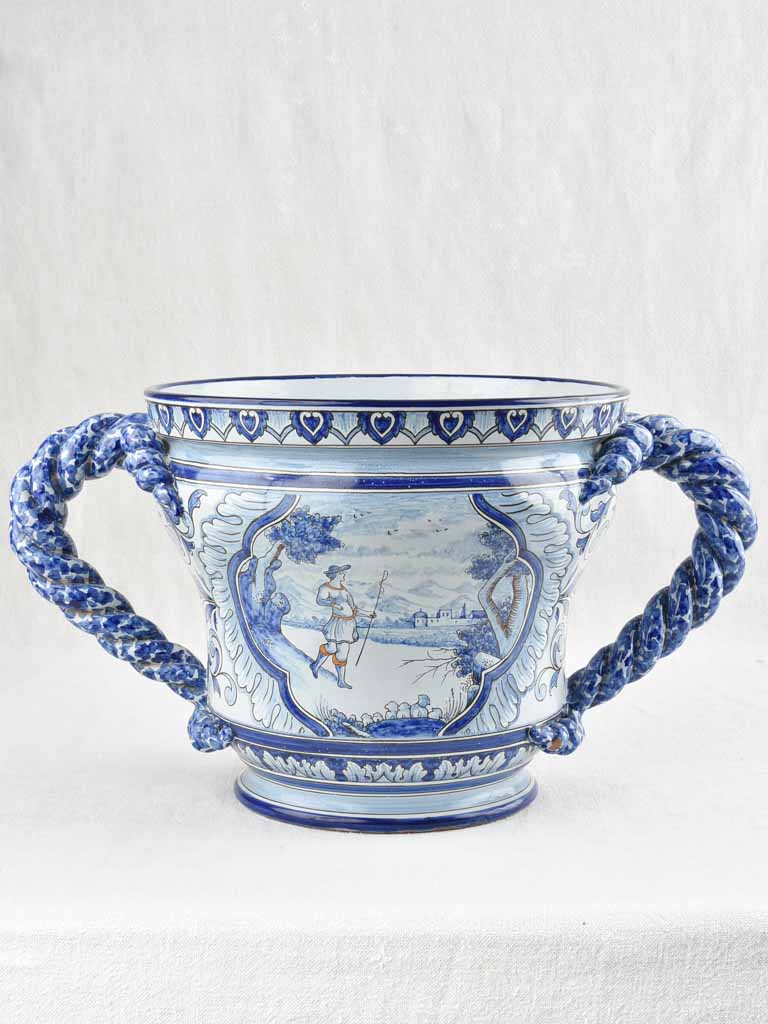
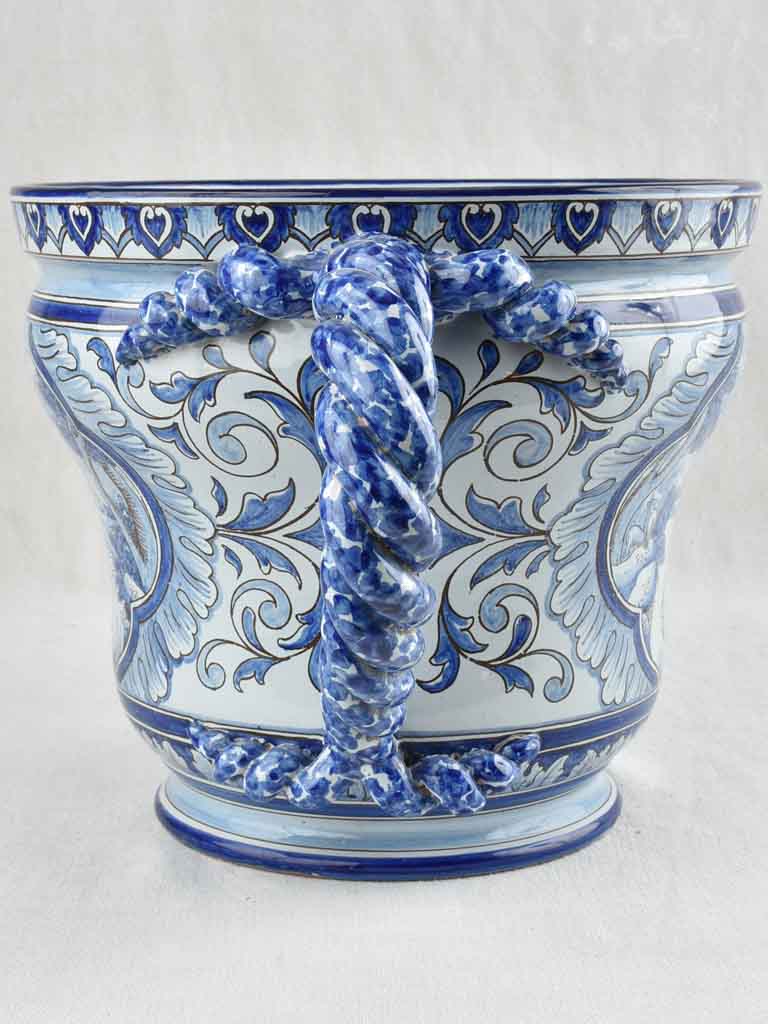
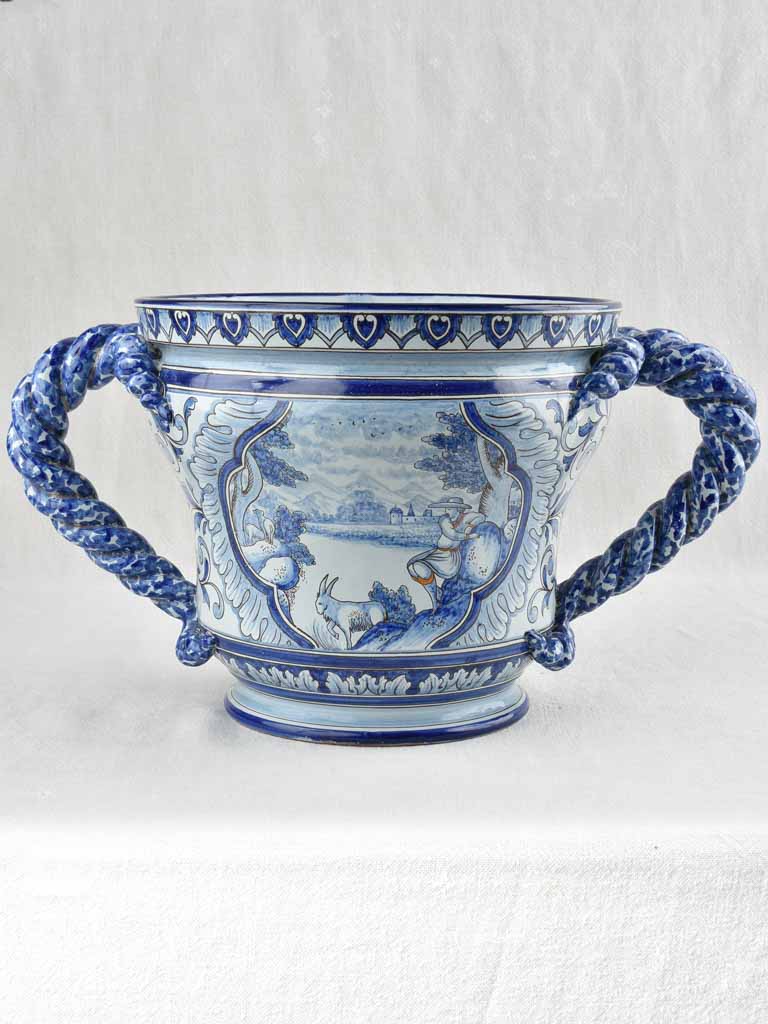
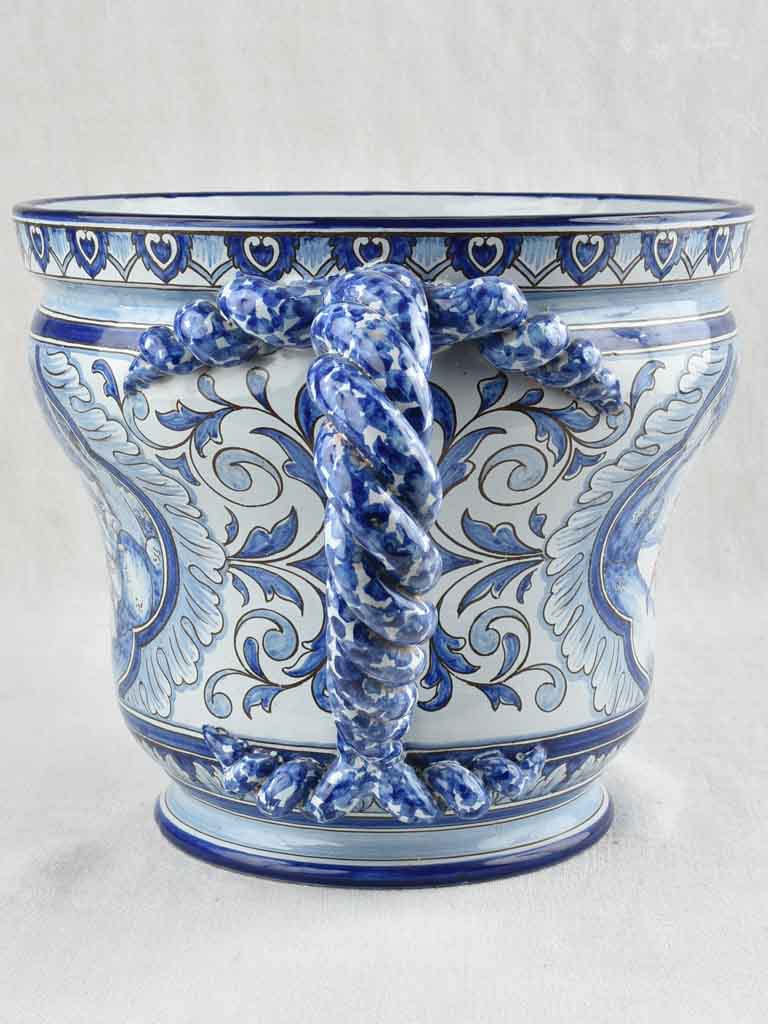
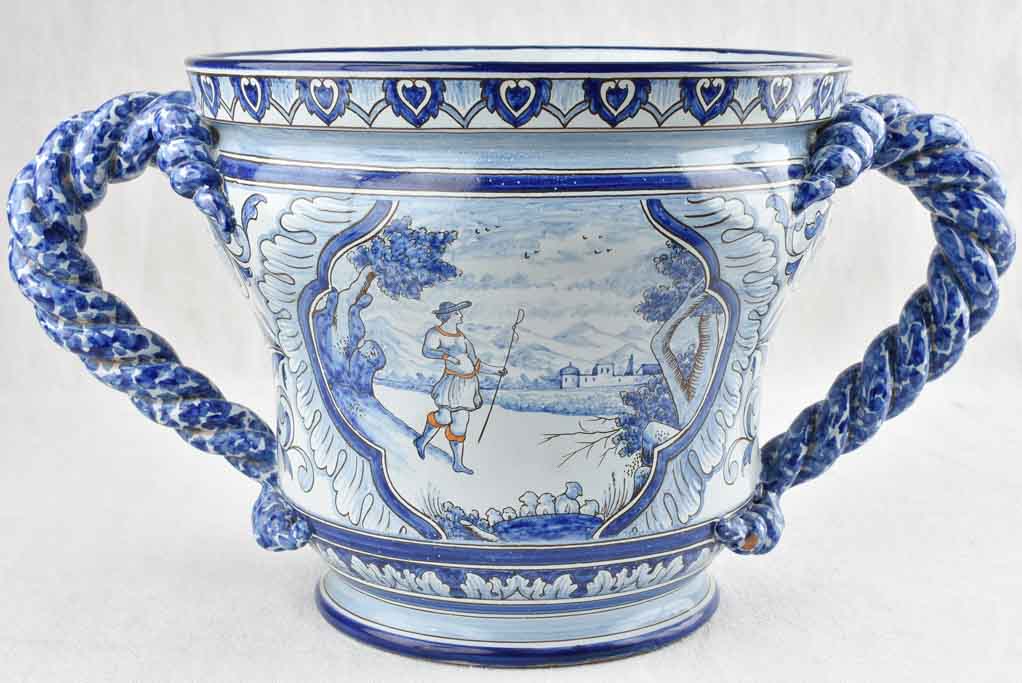
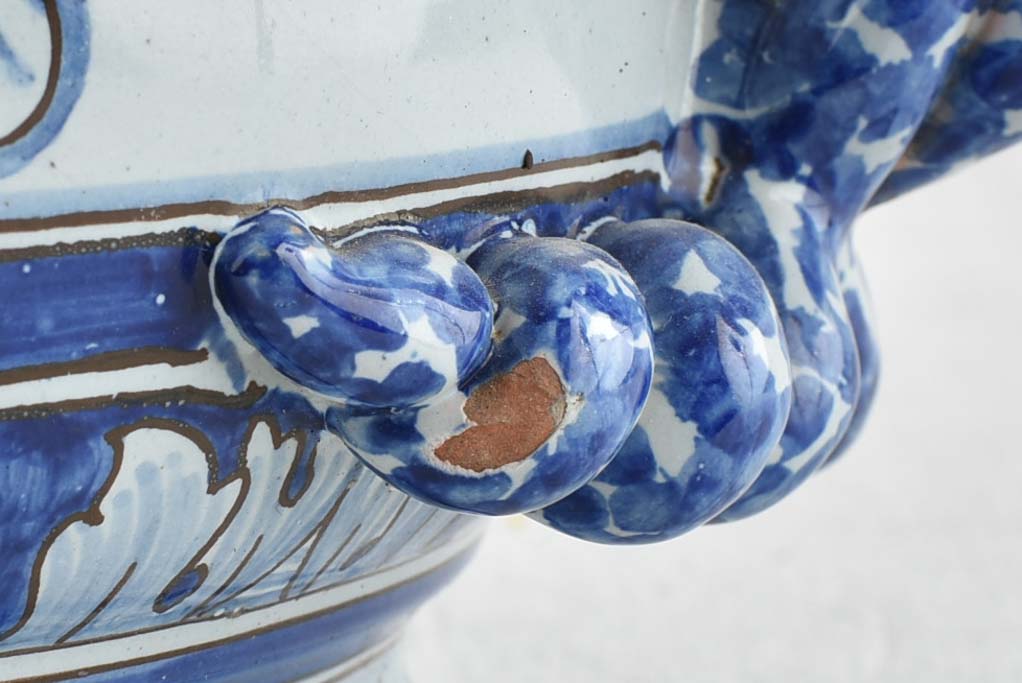
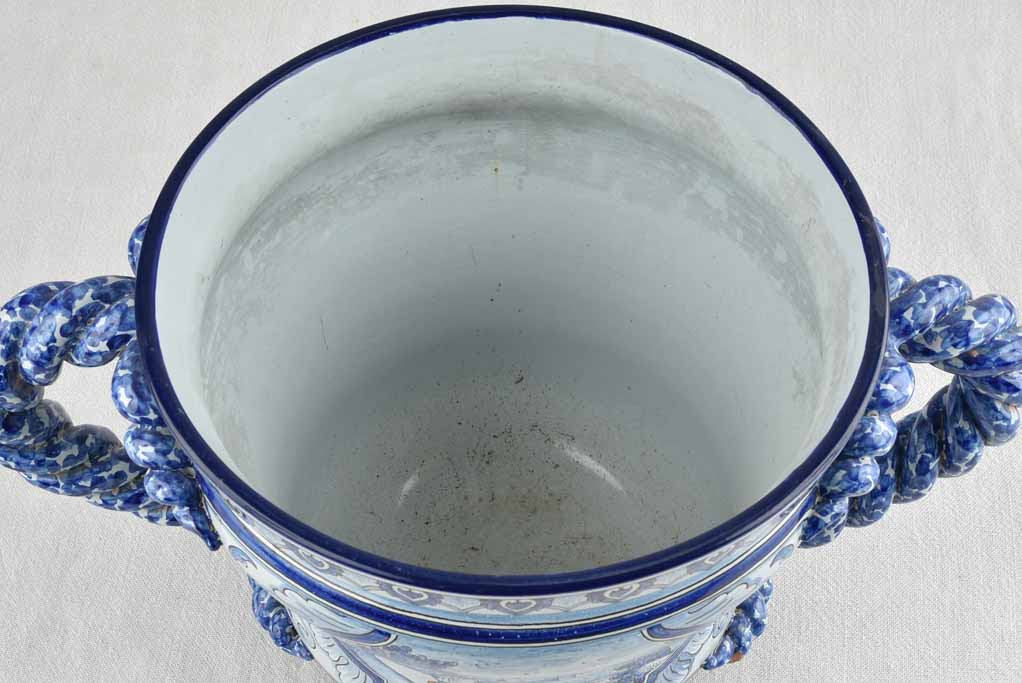
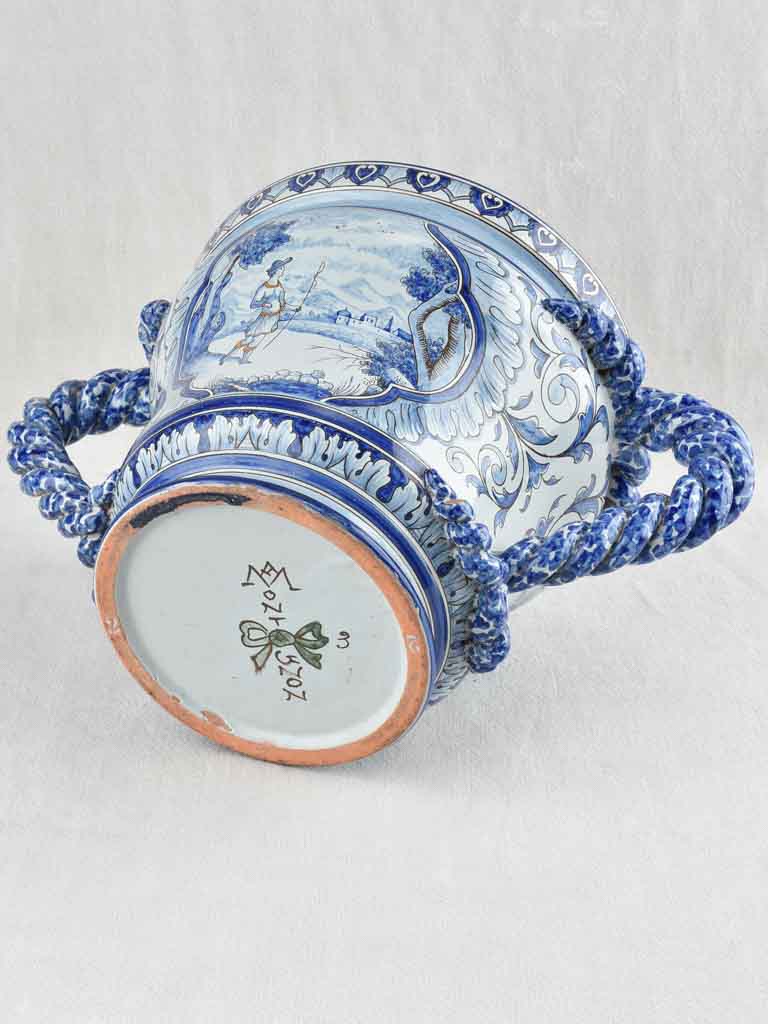
Large blue & white cache pot from Burgundy w/ 2 handles - Antoine Montagnon
Free shipping to USA
The price includes duties, state taxes and shipping. Any tariffs are supplementary.
A large earthenware cachepot from Burgundy, nineteenth-century. Minor chips and wear. Signed underneath Antoine Montagnon.
An extract from Wikipedia (translated from French)
Antoine Montagnon bought the Manufacture du Bout du monde faience (est. 1648) in 1875, and it ran until 2015.
This was bought in 1875 from Henri Signoret by Antoine Montagnon, a fabric merchant who decided to invest in earthenware, which he wanted to relaunch in Nevers. Antoine Montagnon recruited painters, bought the equipment and funds of other factories such as Ecce Homo, Bethléem and L'Autruche, improves tools and techniques and chooses to develop artistic earthenware. He returned to the “Nevers blue” technique and, in addition to the usual small earthenware objects such as pitchers or tea services, he produced very large pieces such as 1.25 meter long planters, dishes four meters in diameter or ewers on a base. His production was rewarded in 1876 with a diploma of merit at the Universal Exhibition of 1876 in Philadelphia, then a first gold medal at the Universal Exhibition of 1878 in Paris and a second at the Universal Exhibition of 1889. In 1884, following a strike, factory workers founded their own company, the Trousseau earthenware factory; it will close ten years later. The Trousseau earthenware factory also adopted the green knot as its signature from 1888, but Antoine Montagnon, who intended to retain the exclusivity of the green knot to sign his production, brought a lawsuit against his competitors, a lawsuit which he lost in 1891. Then January 1, 1899, his son Gabriel Montagnon took over the management of the factory and abandoned the production of everyday utility tableware to devote himself to artistic earthenware. Its production was prized by the Nivernaise bourgeoisie, and the Montagnon house employed at the start of the 20th century around fifty workers.
Condition and wear consistent with age and use.
Approx. overall 10¼" high x 18" wide with handles x 11¾" diameter externally
Approx. overall 26cm high x 46cm wide with handles x 30cm diameter externally
Choose options

